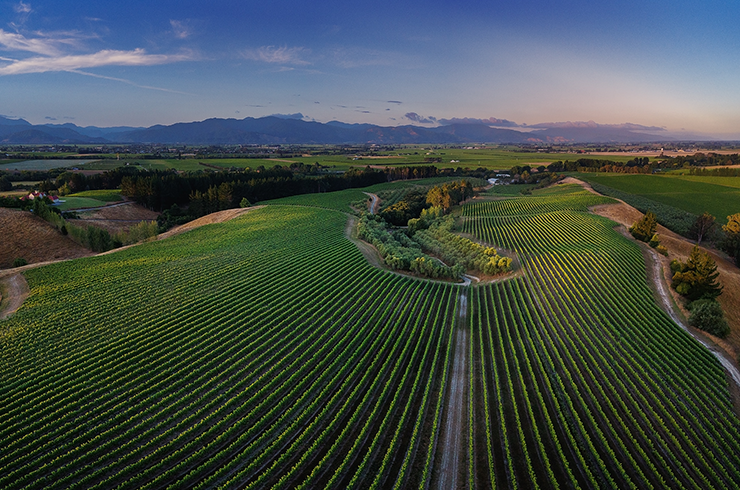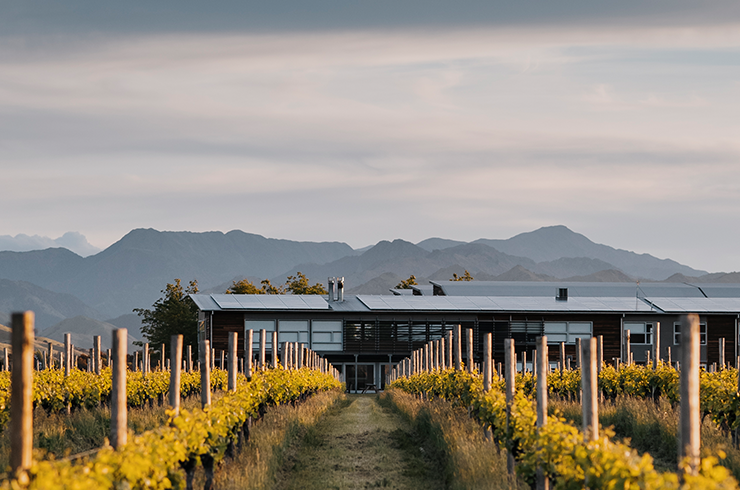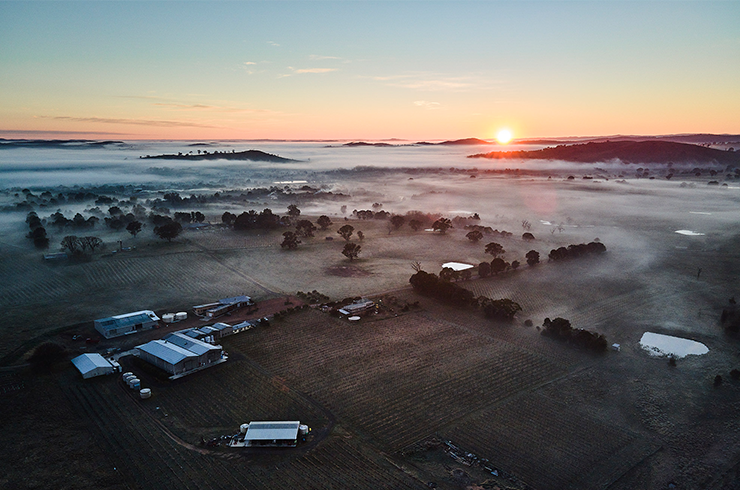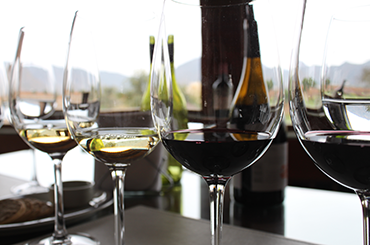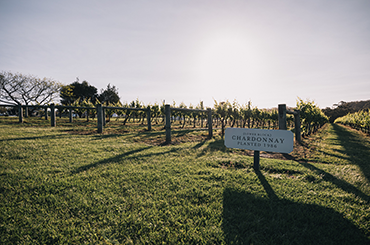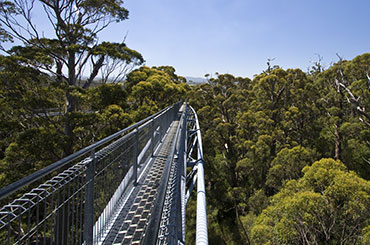You may chuckle at the idea of a road trip around Western Australia’s vast Great Southern wine region. The distances between, and around, each of the five subregions within
the region – Australia’s largest – are significant, to say the least. It’s a tall order for one weekend, but there are ways to do parts of it.
The closest of the subregions within the Great Southern are Porongurup and Mount Barker (20km); while the furthest are Albany and Frankland River (125km). Staying in Denmark or Albany might be the most convenient, given they both have a multitude of amenities and are, on average, equidistant from the rest of the region.
Frankland River is the furthest from all of it, with arguably the least to do – at least in terms of shops, restaurants and bars. The former Rocky Gully pub was a dive, but it was an infamous dive with reliably cold beer, and oh how we miss it. However, Frankland River is also one of the most visually distinct areas and home to some of the most brilliant cabernet, shiraz and grenache in the state. Each subregion has its own unique beauty, attractions and vinous strengths.
A trip here is not complete without a steak and pepper pie and a jam doughnut from the Mt Barker Country Bakery at the back of town. Mt Barker is also home to the oldest vineyard in the Great Southern, owned and planted by Forest Hill Wines in 1965, two years before the first commercial vineyards in Margaret River.
You can’t miss a trip to Lights Beach, Greens Pool, Wilsons Inlet or Monkey Rock – a hike here is recommended. It’s a Grade 4, but the view from the top is worth it. Denmark is steeped in natural beauty of the untouched kind, much of it centred around the beach, bush and wineries dotted along the extraordinarily picturesque Scotsdale and Mt Shadforth drives. Denmark was first explored by the same team of people who stumbled on Mt Barker – Dr Thomas Braidwood Wilson – who named Denmark in 1829 after his colleague Alexander Denmark.
Many of the roads are winding and narrow, making for incredibly scenic driving. The Granite Skywalk at Castle Rock is a must-do, and if you can swing it, dinner at Maleeya’s Thai Cafe. It may seem an odd thing to drive into the Australian bush and eat at a Thai restaurant, but Maleeya is famous for her fresh and locally grown ingredients. Pick up a riesling on the way.
Frankland River nails a number of varieties: riesling, shiraz, cabernet and grenache. Others are grown very successfully here, but those four really wrap up what the region is becoming known for. It might be the furthest away, but if you have even a hint of interest in staying ahead of the curve, then you must acquaint yourself with this area. Stat.
The closest of the subregions within the Great Southern are Porongurup and Mount Barker (20km); while the furthest are Albany and Frankland River (125km). Staying in Denmark or Albany might be the most convenient, given they both have a multitude of amenities and are, on average, equidistant from the rest of the region.
Frankland River is the furthest from all of it, with arguably the least to do – at least in terms of shops, restaurants and bars. The former Rocky Gully pub was a dive, but it was an infamous dive with reliably cold beer, and oh how we miss it. However, Frankland River is also one of the most visually distinct areas and home to some of the most brilliant cabernet, shiraz and grenache in the state. Each subregion has its own unique beauty, attractions and vinous strengths.
Mount Barker
The most northern of all subregions within the Great Southern, Mt Barker is the first you reach when driving from Perth. It’s home to powerfully built rieslings with coiled acidic power and rumbling depth of flavour. The reds have density and plenty of tannin, and they are dominated by cabernet and shiraz. Mt Barker was first explored in 1829, almost four years after the penal colony in Albany – by that penal colony’s surgeon Dr Thomas Braidwood Wilson and a small exploration party – but it wasn’t settled until 1835.A trip here is not complete without a steak and pepper pie and a jam doughnut from the Mt Barker Country Bakery at the back of town. Mt Barker is also home to the oldest vineyard in the Great Southern, owned and planted by Forest Hill Wines in 1965, two years before the first commercial vineyards in Margaret River.
Denmark
Home to soaring karri trees and green hills, Denmark’s coastline is wildly beautiful, windswept and dramatic. The surfing and four-wheel driving are very good, too. The white wines here are relatively diverse and cover chardonnay, riesling, sauvignon blanc and some aromatic varieties. The reds can include pinot noir, shiraz, cabernet and, of course, others here and there.You can’t miss a trip to Lights Beach, Greens Pool, Wilsons Inlet or Monkey Rock – a hike here is recommended. It’s a Grade 4, but the view from the top is worth it. Denmark is steeped in natural beauty of the untouched kind, much of it centred around the beach, bush and wineries dotted along the extraordinarily picturesque Scotsdale and Mt Shadforth drives. Denmark was first explored by the same team of people who stumbled on Mt Barker – Dr Thomas Braidwood Wilson – who named Denmark in 1829 after his colleague Alexander Denmark.
Porongurup
Rieslings are the standout hero for this tiny region, but the cool-climate pinot noir, shiraz, cabernet and sauvignon blanc are also very good. The Porongurup range is a most interesting sight, jutting out of the ground in an otherwise flat area (save for the larger Stirling Range to the north). Expect huge granite boulders, towering gum trees and dramatic views.Many of the roads are winding and narrow, making for incredibly scenic driving. The Granite Skywalk at Castle Rock is a must-do, and if you can swing it, dinner at Maleeya’s Thai Cafe. It may seem an odd thing to drive into the Australian bush and eat at a Thai restaurant, but Maleeya is famous for her fresh and locally grown ingredients. Pick up a riesling on the way.
Frankland River
Frankland River was first settled in 1857, and is memorable for the red dirt, long distances and dusty gums. There’s something captivating about it, despite the fact it doesn’t have the big rocky outcrops of the Porongurups, nor does it have karri stands of Denmark or wild coastline and history of Albany. This is a region where the vineyards meet the sky as they curve over the top of vast rises. The sun beats down here with hot motivation at the height of summer, and the brisk chill sets in at night (all year round – take a jacket).Frankland River nails a number of varieties: riesling, shiraz, cabernet and grenache. Others are grown very successfully here, but those four really wrap up what the region is becoming known for. It might be the furthest away, but if you have even a hint of interest in staying ahead of the curve, then you must acquaint yourself with this area. Stat.
Albany
Follow the Albany Highway from Perth and at the very end lies Albany. The most southern of the subregions within the Great Southern, Albany was the first to be settled as a penal colony in WA (1826) and it’s steeped in whaling and maritime history. Each visit here reveals another interesting historical event, and the car-sized granite boulders littered around the steep streets in town (you can’t miss Dog Rock) are enough to keep most interested. This is where many of the bars, pubs and shops are located in the Great Southern, so if these options are part of your travel criteria, be sure to make your way to Albany.To discover more about the Great Southern region, check out our essential guide.
Latest Articles
-
Wine Lists
The 50 most popular wines of 2025
just now -
Wine Lists
A snapshot of top New Zealand wines (all rated 91 points and above)
18 Dec 2025 -
Behind the label
Taste Aotearoa: Get to know these five New Zealand wineries
18 Dec 2025 -
Wine Lists
Just in: 14 newly reviewed wines to try this December
17 Dec 2025

